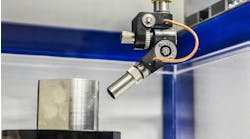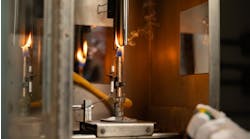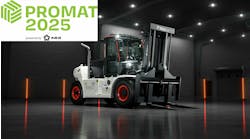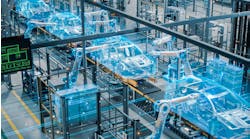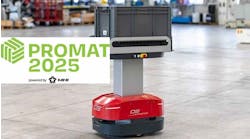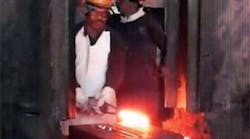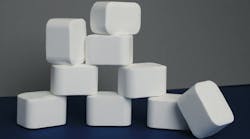Latest from Product News
CONDAT continues its development and improvement efforts for its forging lubricant products, in use for more than 160 years, and lately to include formulations that address the emerging Global Harmonized System (GHS) for classifying and labeling hazardous chemicals. Its products include: CondaForge and CondaForge AL graphite-based lubricants for hot and warm steel and nonferrous forging; Orafor graphite-free lubricants for hot and warm forging; and Condaero super-alloy coatings and lubricants (e.g., glass coatings) for precision forging of titanium and super alloys (Nimonic, Inconel, etc.)
The GHS is United Nations-sponsored, internationally agreed-upon system, created to replace various industrial chemical classification and labeling standards used in different countries, and replacing those with consistent criteria for classification and labeling on a global level.
The developer noted it has been working to address these regulations for several years to ensure that its products will be GHS-compliant by June 2015. Both packaging and SDS have been progressively updated, according to the new GHS classification, it said.
For example, in European labelling, the lubricants’ R&S security phrases are replaced with “H” and “P” phrases (respectively, “Hazard” statements and “Precautionary” statements), and orange pictograms are replaced by diamonds with a red frame. In the U.S., GHS implementation may lead to major changes to the hazard communication standards, such as changes in definitions of hazards, specific criteria for mixture classification, and incorporation of harmonized label elements (signal words, pictograms, hazard and precautionary statements.)
In general, Condat noted that rules for classifying substances are changing, so that more substances will be classified, meaning that more finished products (mixes of substances) also will be classified. And, the threshold for classification will be lower, meaning that the classification for finished products will be more severe. Therefore, products will not become more dangerous, and formulas will remain the same, but their labeling will become more severe.
Condat offers forging lubricants in tablet form, such as ORAFOR PB, the first forging lubricant available an effervescent tablet. This formulation achieves maximum concentration of the lubricant, which reduces the volume of product and thus transportation costs, and minimizes handling and waste.
